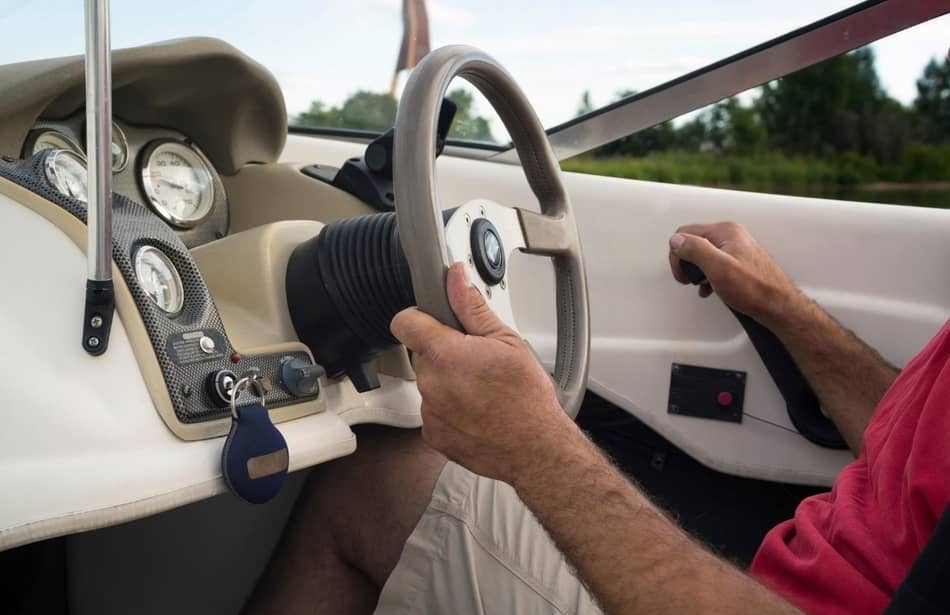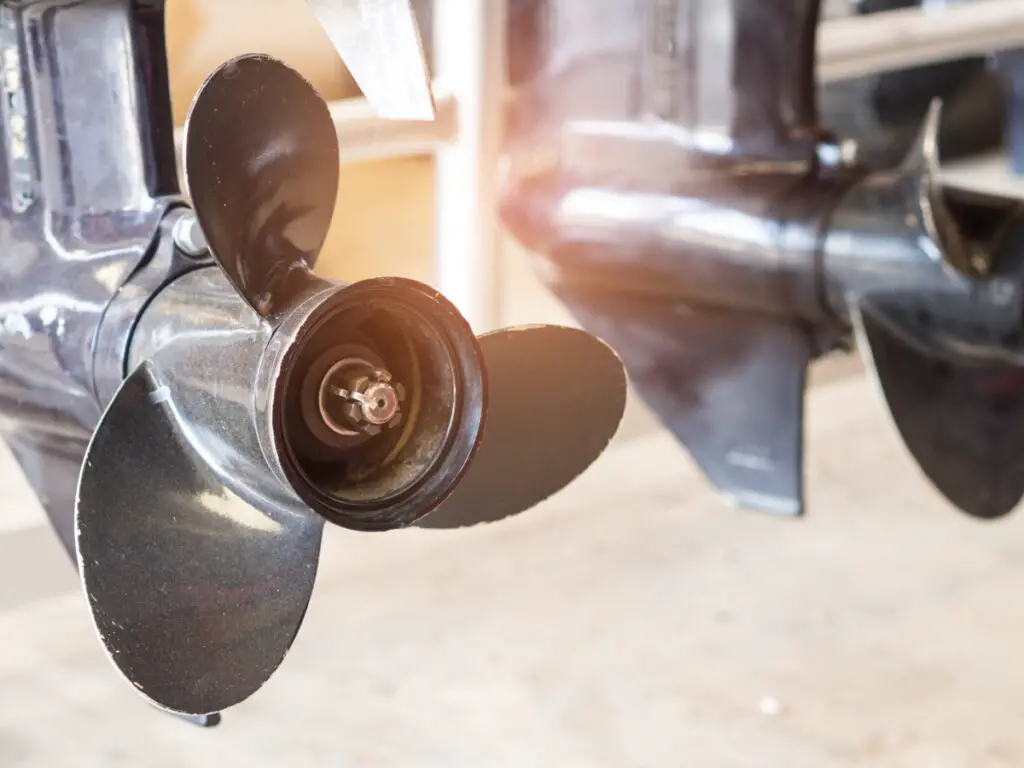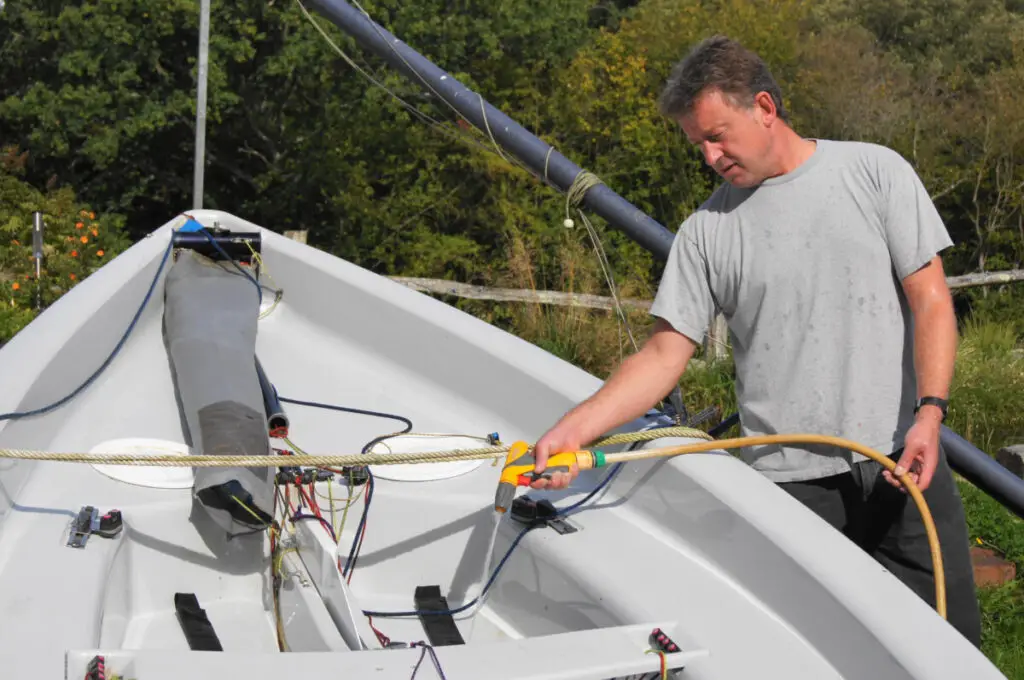
Imagine you’re all set to go boating on a gorgeous summer day only to discover that your boat breaks down the moment you slide it into gear. That would be enough to ruin anybody’s day and even the entire week, especially if the problem is going to take a good long while to fix. If you’ve ever had or currently are having some weird issues with your boat after putting it in gear, you have come to the right place.
A boat may quit after putting in gear due to a bad fuel pump/filter, low idle, bad shift cable, bad sparkplugs, fuel shortage, and a variety of other possibilities. Many can be avoided with simple, thorough maintenance, though they will all likely need not be fixed by a professional.
As you can see, there is a pretty large variety of possibilities when it comes to boat failure after sliding into gear, and that variety might feel pretty overwhelming at the moment.
However, to every problem, there is a worthy solution, so read on to learn what you might be dealing with as well as the way to solve the problem. Hopefully, knowing a few of these things will put your mind at ease somewhat.
The Boat Quit: Common Problems and Solutions
You’ll know your boat is about to quit on you if you start to hear clunking or other abnormal sounds that indicate changes with the inner workings. If you start to hear that and/or the boat just dies after putting in gear, you’ll undoubtedly want to know exactly why and how. Here are the likely possibilities.
Low Idle
A low idle is one of the main problems that will cause a boat to abruptly stop when it is put into gear. If your boat doesn’t have enough power, it’ll idle at a lower and lower speed. Eventually, your engine will lose power and quit on you.
There is back pressure on the motor exhaust when submerged underwater; this restricts the airflow through the motor and causes it to idle slower than on land. Set the idle with the motor in the water. 100 rpm can be the difference between the boat engine dying out and working fine.
Also, the final tuning should be done on the water with pressure, not on a driveway with muffs. However, if you adjust it using muffs, set it at around 800rpms to start with because it will probably idle best around 600-650 on the water. Finally, the idle in neutral should be around 800ish and around 600ish in gear.
Bad Fuel/Pump/Filter
Bad fuel can indeed cause problems, especially if too much air reaches the fuel tank. This could cause the tank to swell and the engine to be negatively affected. Similarly, if your fuel pump is bad, that means enough fuel will not be reaching the engine. This will cause it to die and die quickly.
While you’re at it, be sure to check that the fuel filter isn’t in bad shape. Over time, a fuel filter will become clogged and filled with dirt, gunk, and small debris. If it becomes too full, that gunk will make its way slowly into the fuel reservoir itself. Contaminated fuel will cause the engine to burn up and sputter until it dies.
The only way to fix this is to check and change (or clean) the filter as often as possible. This will prevent you from experiencing any unpleasant surprises with your fuel tank. You also ought to inspect the fuel pump for any problems. If there is something wrong with it, you can take it to a repair shop to get it fixed or DIY it. Make sure you do that sooner than later.
Bad Carburator
A bad carburetor can stall the engine after reaching certain RPMs. The carburetor will most likely stop functioning the way it’s supposed to if it has gotten dirty, suffered damage of some kind, or is simply worn out. If your carburetor is covered in a layer of dust or grime, it’s probably time to take action.
Thankfully, all you should have to do is give the carburetor a good, thorough cleaning. Once you have done that, there should be nothing to stand in the way of its functioning properly. If you clean it and the carburetor still won’t cooperate, you can take it to a repair shop to get it fixed.
Bad Interrupt Switch
For those of you who are wondering, an interrupt switch is a little device that allows you to switch gears with ease. If it has become disconnected, that is probably why your boat is shutting down when you try to shift into gear. This switch is located near where the engine rests.
Give it a quick inspection! If you observe that it is bent, broken, disconnected, or disabled in any way at all, it’s going to need fixing or replacing. While you could try to tackle it on your own, a broken interrupt switch is a pretty tricky problem to face, so it might be wiser to involve a professional repairer. This way, you won’t risk worsening the issue.
Bad Shift Cable
A bad shifter cable simply means that shifting will be stiffer. It might also mean that you can’t shift into gear at all, so if your gearshift isn’t cooperating, this probably means there is an issue with the cable. This is also a bit of a sticky situation to be in, so it’s probably best that you hire somebody to help you get it taken care of.
Spun Propeller
This probably sounds like a strange name for an issue because isn’t a propeller supposed to spin? What “spun propeller” means is that the prop hub which is what the propeller is attached to. When the hub spins, it becomes disconnected from the propellor, which means that the propeller will spin freely with no power. When this happens, it likely means that the hub has been damaged in some way and either needs to be repaired or replaced entirely.

When this happens, the solution is fairly simple. First, inspect the propeller to see if it has indeed been disconnected from the hub. To test this, you can mark the propeller and the hub in the same place, then run the propeller for a few minutes. If it comes to a stop and the marks are no longer aligned, that means they have become disconnected.
If this has happened, you will need to remove the propeller and replace or repair the hub. If you are unsure of what to do, it may not be a bad idea to enlist the help of a professional or a friend. However, if you feel fairly confident in your abilities, you could easily replace the hub all on your own. For some step-by-step instructions, go here.
Bad Sparkplugs
If your boat has started making jerky movements or the acceleration is sluggish and not quite up to scratch, that is possibly indicative of poorly performing sparkplugs. Just like cars, boats cannot function properly with bad sparkplugs, so if you shift into gear and the boat refuses to move, this is probably one of the places you ought to check for problems.
So why has the sparkplug “gone bad”? The most common explanation for this is fuel, oil, or another fluid getting to the sparkplug. Sometimes this has no effect, but if the fuel is dirty, it will contaminate the sparkplug and cause it to quit. This is another reason why keeping the fuel filter clean is so important.
Thankfully, replacing a sparkplug is in no way difficult. All you’re going to need to get the job done is a socket wrench and a sparkplug socket. You will need to remove the old sparkplugs and replace them with new ones if necessary (though sometimes it just takes a good, thorough cleaning). You can learn more about how to do that right here!
Bad Distributor Cap and Rotor
Distributor caps and rotors will wear down and grow old over time, and eventually, they will need repair or replacement. If the engine continues to stall or it keeps stopping, this could probably be a sign that your rotors and distributor caps are not doing their jobs. If this happens, you’re going to have to call in a boat mechanic for help.
Less Fuel
Even the least experienced boater knows that not enough fuel is going to cause a problem. If you don’t have enough fuel in your boat’s tank, you are not likely to get very far. The best (and only) way you can prevent starting up and losing power is to check and double-check your fuel tank before you leave.
Be proactive and make sure you have enough fuel. This way, you won’t be disappointed when your boat stops halfway across the lake. It might even be a good idea to take extra fuel with you as a precaution. If you do, you’ll be prepared for just about anything that might come your way.
Maintenance: Keeping your Boat in Shipshape Condition
These issues are often unavoidable at some point in life; no piece of manmade machinery is going to be without its problems and quirks in life. However, if you are willing to be diligent and careful in keeping your boat well maintained and cleaned, the likelihood of these issues happening regularly is very minimal.
This is especially true since most of these issues arise from dirty or worn-out parts. Below you will find a few tips that, if practiced regularly, will keep your boat in pristine condition. If your boat has been kept clean and maintained, you should be well prepared for anything that comes your way. Here are a few good things to know!
First of all, it’s important to check your fuel levels and batteries before ever heading out to the waters. As mentioned above, going out with a half-empty fuel tank is one of the worst things you could do. That being the case, check and double-check your fuel tank and batteries regularly.
Doing so will also help you to become aware of any problems that might occur within the battery or fuel tank. Of course, make sure you choose the right kind of fuel, too. It might be wise for you to replace the boat’s batteries every four to five seasons at least.
This will keep you from being surprised by faulty ones at any point during your boating trip(s). Plus, as mentioned before, keeping tabs on those batteries will help you become aware of any issues with the batteries in advance.

Keeping your boat clean is also an important part of maintenance. As seen above, about half of the issues listed partially stem from having parts that are covered in dirt and grime. Give your boat a healthy scrub down every once in a while (or more often, depending on how frequently you use it) to keep it in pristine condition.
This will prevent you from being surprised by any serious problems. This kind of cleaning extends far beyond just cleaning the exterior. You should also pay some special attention to the canvases (any fabric components of the boat) by scrubbing them with light soap, water, and a gentle scrub brush.
Be sure to check your engine oil often before the outing. You must be as vigilant about checking your boat’s engine oil as you would with your car. Too little oil or contaminated oil will cause the engine to burn up fairly quickly.
Another important thing to remember is to keep your boat stored in an appropriate area. If you must store it outside (which is common), you should keep it covered at all times to protect it from heat and sun. If possible, you can even get a professional to shrink-wrap the boat, so it remains properly covered 24/7.
If you can, it might not be a bad idea to keep your boat stored indoors. You can store it in a garage or storage unit (which is especially nice for the colder months). Sometimes it is impractical to keep it inside, which is okay, but if you can, it is recommended. Doing so will keep it protected from all of the elements, rain and snow included.
As long as you are taking good care of your boat, your boat will take good care of you too. Keep it clean and well-maintained, and you will be in good shape! You can read more about boat maintenance here.
